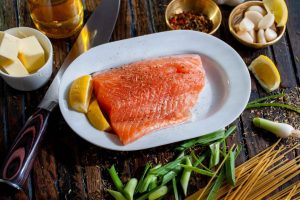When it comes to nutrition, we often focus solely on calories and macronutrients. However, there is much more to achieving holistic nutrition than these quantitative measures. The food guide provides a comprehensive and holistic approach to healthy eating, empowering us to make informed choices about our overall well-being. In this article, we delve into the significance of the food guide and how it can guide us on a path towards holistic nutrition.
Looking Beyond Calories and Macros: While calories and macros are important considerations in nutrition, they do not provide a complete picture of our dietary needs. The food guide goes beyond these metrics by emphasizing the importance of consuming a variety of nutrient-dense whole foods and promoting balance across food groups.
Understanding the Essential Components: The food guide serves as a roadmap to choosing wholesome nutritional options. It encourages us to focus on incorporating the following essential components into our diets:
- Nutrient-rich fruits and vegetables: These colorful powerhouses provide an abundance of vitamins, minerals, antioxidants, and dietary fiber. Their inclusion in our daily meals adds vital nutrients that support optimal health and disease prevention.
- Whole grains for sustained energy: Choosing whole grain alternatives like quinoa, whole wheat bread, and brown rice over refined grains provides additional fiber and essential nutrients. These nourishing options promote satiety, stabilize blood sugar levels, and provide sustained energy throughout the day.
- Lean proteins for muscle health: Including lean sources of protein such as poultry, fish, legumes, tofu, and dairy products supports muscle development and repair. Proteins are also vital for hormone synthesis, enzyme production, and immune function.
- Healthy fats for overall well-being: Incorporating healthy fats from sources like avocados, nuts, seeds, and olive oil provides essential fatty acids, which support brain function, heart health, and overall well-being. These fats also aid in the absorption of fat-soluble vitamins.
Prioritizing Whole Foods and Nutrition Quality: Beyond macronutrients, the food guide emphasizes the importance of choosing whole foods over processed options. By focusing on the quality of ingredients, we can ensure that our bodies receive the necessary vitamins, minerals, and antioxidants they need to thrive. Consuming whole foods also helps reduce our intake of unhealthy additives like added sugars, refined grains, and artificial preservatives.
Customizing Your Holistic Journey: Though the food guide provides valuable recommendations, it is important to remember that personal preferences and individual needs may vary. Customization is a fundamental aspect of embracing holistic nutrition. Consider factors such as dietary restrictions, cultural influences, and ethical considerations when using the food guide. Tailoring your approach allows for a sustainable and enjoyable nutritional journey.
Balancing Mind, Body, and Plate: Holistic nutrition extends beyond the choices on our plates. It encompasses the mindful integration of mental, emotional, and physical well-being. Aim to cultivate a healthy relationship with food by practicing mindful eating, maintaining a positive mindset, managing stress levels, prioritizing sleep, and engaging in regular physical activity. These lifestyle factors complement the guidance provided by the food guide to promote optimal health holistically.
Conclusion: Embracing the food guide unlocks the potential for achieving holistic nutrition. By looking beyond calories and macros and considering the essential components of a balanced diet, we can nourish our bodies from a place of knowledge and intentionality. Prioritizing whole foods, customizing our nutritional journey, and balancing mind, body, and plate allow us to cultivate a truly holistic approach to our overall well-being. Let’s embrace the value of the food guide, helping us make informed choices that support our long-term health goals.















Add Comment